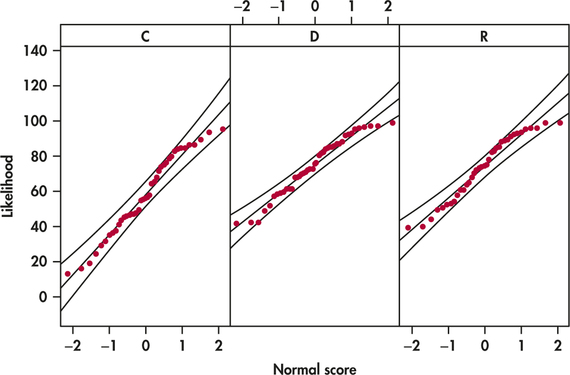EXAMPLE 14.7 Verifying the Conditions for ANOVA
moral
CASE 14.1 If ANOVA is to be trusted, three conditions must hold. Here is a summary of those conditions and our assessment of the data for Case 14.1.
SRSs. Can we regard the three groups as SRSs from three populations? An ideal study would start with an SRS from the population of interest and then randomly assign each participant to one of the groups. This usually isn’t practical. The researchers randomly assigned participants recruited from one university and paid them to participate. Can we act as if these participants were randomly chosen from the university or from the population of all consumers? People may disagree on the answer.
Normality. Are the likelihood scores Normally distributed in each group? Figure 14.7 displays Normal quantile plots for the three groups. The data look approximately Normal. Because inference is based on the sample means and we have relatively large sample sizes, we do not need to be concerned about violating this assumption.

Common standard deviation. Are the population standard deviations equal? Because the largest sample standard deviation is not more than twice the smallest sample standard deviation, we can proceed assuming the population standard deviations are equal.